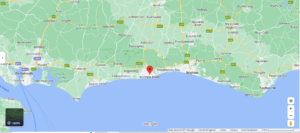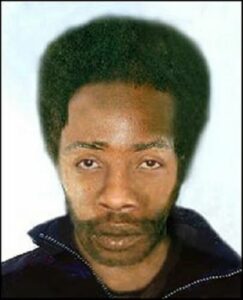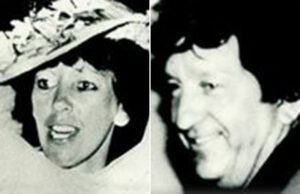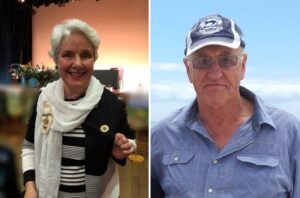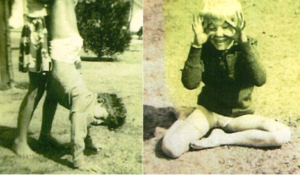The Murder of Sophie Toscan Du Plantier, 1996
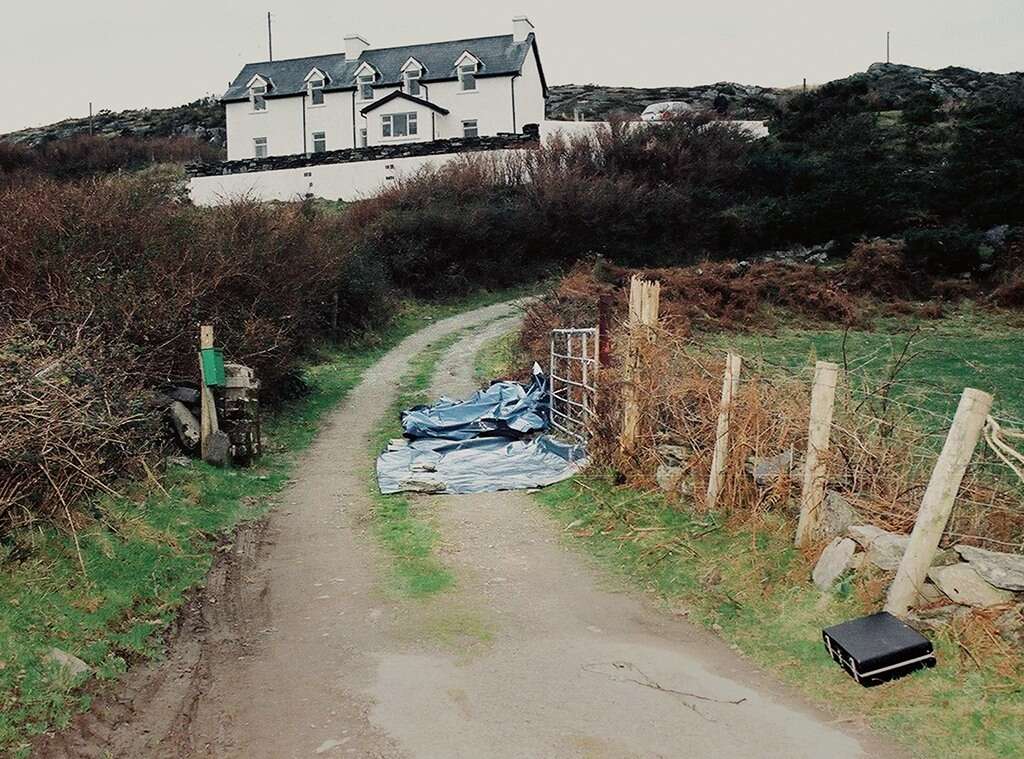
The house is that owned by the victim. The gate is where her body was found.
I watched a TV documentary about this murder the other night. ‘Sophie, Murder in West Cork’ is delivered in three parts and is fascinating to say the least. Currently it is on Netflix. I strongly recommend it. That said as with the documentary on Steven Avery ‘ Making of a Murderer’ I urge a bit of caution. Both of these leave out enough detail to flag up a bit of concern. Not for what they have in the programme so much as what they leave out.
Brief Circumstances.
This 39 year old French lady bought a remote cottage in Ireland’s County Cork in 1993. The nearest settlement of any size is called Schull. Contrary to how it is pronounced Schull means ‘school’ as opposed to having a more morbid meaning. According to family she developed a love of the place and the people going way back. As a successful woman in French TV production, married to an equally successful film industry husband, she had the opportunity to travel and enjoy the rugged landscape.

On 20th December 1996 she went to the house for a brief visit. She was alone and the idea was that she would return to France in time for Christmas. In other sources it is said she was to spend Christmas in Ireland alone.
In the black rural night of 22nd or into the early morning of 23rd December she was attacked. The murder scene was a little distance from her home on a country road about the size of a farm track. She was assaulted with a piece of slate and a concrete block.
Ms Du Plantier was found at 10 am on the morning of 23rd December.
It appears that she had tried to escape her attacker after opening the door or fled from the house after allowing someone in. In part the attack took place in undergrowth that included briar and the thorns that come with it. It was a brutal attack underlined by the fact that one piece of evidence was a farm gate on which blood had been splattered.
The Investigation
Policing style and experience depends on the environment. It takes skill to police a rural area, it takes slightly different skill to police an urban area. This part of Ireland was country stuff and this was the first homicide in living memory. The detectives had to travel a long way to get there from Dublin as did seasoned forensics experts. Ms Du Plantier had to stay in place for a long time.
Although Schull and the district is as Irish as you can get it had a long history of cosmopolitan absorption. Many people from many backgrounds had come to live there. It was seen as a welcoming place. You had British people along with natives and of course at least one French lady.
The victim was of an artistic personality. At the time of her death she apparently was going to do a project about bodily fluids for example. I don’t know if that was to be a educational type film or an arty type one that I would run a mile from. The point is it gives you an idea of the sort of thing she spent her days doing. She was in good company in that part of Cork, they had writers and poet types scattered around.
According to family she talked of meeting a writer/ poet while in Ireland. Back in Paris Ms Du Plantier mixed among the top flight of movie and TV people. Her married life had been a bit rocky, at one point she had been involved with another artistic luminary while separated from her husband. At the time of her death they were reconciled and there is nothing other than unsubstantiated rumour to suggest she had romantic links with her adopted Irish community.
The cops did what they always do. They looked for witnesses. They found some and pieced together the evening and days before she died. There was talk of a visit she made to a ruined castle and her seeing an apparition that foretold of tragedy. Otherwise little of note was unveiled. At some point she opened the door to someone and it is likely that person killed her.
Then a break came. Phone calls were made by a witness using an assumed name. She said that she was travelling in a car at 3 am when she saw a man out and about. He was acting strangely agitated. The problem was the witness said she was with a man that was not her husband. She wanted to let the police know about this possible suspect, but as she was married with kids there would be major issues if she came forward.
After a TV appeal she called the police again. This time the call was traced. Once the police latched on to this they couldn’t let it go and she had to step forward. The lady also, at some point, saw the man from the bridge again. She told police officers nearby and he was identified. After that the whole thing went from a brutal and vicious murder to a circus.
The witness, Marie Farrell, had identified a British born local journalist called Ian Bailey. He and his partner said that he was not on the bridge and she was mistaken. Mrs Farrell insisted she was not. Bailey was arrested and formally interviewed twice by the police. There was a lot of circumstantial evidence that made him look the part of a likely suspect. There were suggestions that he knew the victim. Bailey said he did not. There were allegations that he had confessed to the crime to local people. He said he had not or that any accusations had been twisted from sarcastic remarks he had made. All this occurred over several years.
In the end Bailey sued several newspapers over their coverage. He lost the case partly because Mrs Farrell testified that she had seen him and was sure it was him. That would mean he was lying about his timeline of course, a timeline the newspapers in question were basing their stories on.
A problem for Bailey was he had a history of inflicting physical injuries on his current partner.
A fire had been built and lit on the property they shared. The cops said there were suspicious items in the fire. Bailey said it was a fire from before the murder and it was not suspicious.
He had injuries in the form of scratches to his hands that were seen by locals and recorded on a drawing by a police officer. He had a scratch on his forehead. Bailey said the injuries were minor and came from cutting down a section of a tree for Christmas and from an altercation with a turkey he had killed.
In the end Bailey lost some of the actions in court but won a couple. Already put out there as a likely suspect he suffered a great deal in the court of public opinion too. As a freelance journalist that was likely a bitter blow.
Mrs Farrell did not just say she had identified Bailey. She went on to say he had tried to intimidate her into changing her story. By 2005, however, she had changed her mind. At that point she came forward and said she had made the lot up. She claimed that the cops knew she was out with a man she should not have been with. They used that as leverage to get her to claim Bailey had been out and about that night.
Well you may know if you have read my articles how I feel about witness testimony. With the best will in the world one witness means little to me as far as evidence goes. Even more only indicates a possible suspect. Give me science over witnesses on any day.
Her shock change to the story messed up everything for the authorities.
So now the question was did the cops conspire to convict Bailey? In the end a good deal of political and judicial circling led to another court case. As I understood the situation a jury decided that three named cops had not committed any crime. This flies in the face of high ranking officials that were very scathing about the way the police behaved and a series of recordings.
These tapes were of the local police investigation into the murder. Interestingly these tapes ( gathered by other cops) were not a complete set. Some of them had perished in a flood apparently. When examined it was decided that the cops had not messed with evidence BUT they had considered it. I will note here that this is one of the more obvious omissions from the Netflix documentary
Meanwhile, in France, another issue was coming to the boil. By 2007 the family and friends of the victim ( yeah, remember this poor woman) formed a pressure group. As it is in the UK there is a duty of France to at least take notice of a citizen dying abroad. When it comes to murder they can investigate and prosecute themselves.
This they did. Ian Bailey was tried in Paris. He was not there and I doubt he will ever walk down the banks of the River Seine because he was convicted of the murder of Ms Du Plantier. The Irish High Court decided that they would not support an extradition of Ian Bailey though. As had been the case when the Irish cops arrested him there was not sufficient evidence to convict. So this led to a rather uncomfortable situation for these two ,normally, friendly nations.
One of the problems is the difference between the two legal systems. The Irish system demands a higher level of proof than the French system. Personally from taking a brief look at the two. I like the Irish system better.
My Take
Not only were the police suspect in their handling of the enquiry regarding Bailey. They were suspect in their handling of the physical evidence. Remember the farm gate I mentioned? They removed it early on. Apparently they then misplaced it. This is a very wide, galvanised, farm gate with blood marks on it. I mean really?
I support the local cops on the ground on the day. They were good I bet at the day to day policing of the area. They called in experts. It is them that have to carry any guilt for messing this up. That of course and whatever caused Mrs Farrell to change her story.
To me this is simple. Was there any evidence that puts any known person at Ms Du Plantier’s cottage that night?
Unless you can place someone there all you have is suspicion. However strong that suspicion is it will not get home at court ( as we used to call it in the police) given you have to prove it beyond a reasonable doubt. As far as I am aware there is no such evidence.
I may hate that, you may hate that but if accused of a crime we might feel differently.
I hope for the family the investigation gets somewhere this time.
Have you any thoughts on this?
Maybe you could have a look at the article I wrote about witnesses. Do you agree about the unreliability of people and what they see or do not see?
Take Care
Tim
